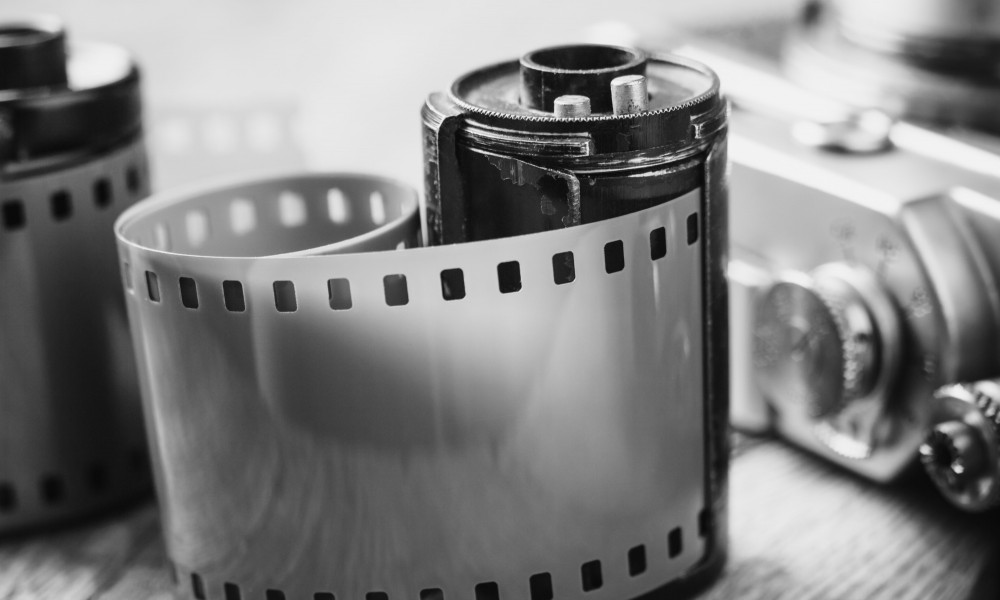Know Ukrainians: Eugène Deslaw

Diplomat, journalist, filmmaker, historian, boy scout, worker of the Renault factory- all this is not just fascinating and courageous professions, but also what Yevgeny Slabchenko, born in the heart of Ukraine - in Cherkasy region in 1899, has been doing during his life. Being practically the same age as the new century, this incredibly active and energetic Ukrainian began his activity as a social activist and a volunteer of the UNR during the years of revolutions and wars that followed the collapse of the Russian Empire in 1917. Having received a rather modest provincial education, Slabchenko did not hesitate to learn something new all his life, so he advanced very quickly on his career ladder - in 1919, yesterday's graduate of the Belotserkovskaya gymnasium and the founder of one of the first corrals in Ukraine scouts received an appointment to the second Attache of the Extraordinary Diplomatic Mission of the Ukrainian People’s Republic in the USA. In early 1920, he joined the creation of representative offices of the Ukrainian Plast in Prague and Podebradach: in October 1921, Yevgeny Slabchenko and Yuri Gonchariv-Goncharenko created the Ukrainian Scout Organization in Prague, namely the First squad of the Golden Trident and registered it in the Czech Union Scout boys. It was the first Ukrainian organization in a foreign land. Przhskie old scouts were engaged in the promotion of the very idea of Plast and physical education, supported the faith of young people in the Ukrainian idea. To the follower and representative of the first cohort of staff of Ukrainian diplomatic institutions, the way to return to Bolshevik Ukraine was closed. Photo zbruc.eu
Photo zbruc.eu
In 1924, Yevgeny Slabchenko departed to Paris where the numerical figures of the Ukrainian revolution began to gather, where Simon Petlura came to his entourage, but the youth gradually lost interest in pure politics. He sought to find himself in France, remaining a soul in Ukraine. “I started my career in Paris ... a simple worker at the Renault factory,” he recalled the beginning of his Parisian life.
Having mastered by that moment in the West, Evgeny Slabchenko becomes Eugène Deslaw and comprehends the basics of the new and incredible popular art in those years - cinema. He finished the special courses of projectionists and having mastered the technical side of the question, undertakes to shoot the first films. Thanks to his talent to notice things that are not the most obvious at first glance, he achieved success in using close-ups, double exposure, optical deformation, non-standard editing techniques which made his work recognizable and provided a place among the pioneers of world cinema. In the history of the world avant-garde cinema, he entered the works “March of the Machines” and “Electric Nights”, “Montparnasse”, “War of the Boys” (the first film made jointly with Jacques Daroux). Deslawwas also successful in film journalism. His film essays began to appear in special cinematographic chronicles of France and other countries: Bulgaria, the Czech Republic. In 1928, he also became a French correspondent for the All-Ukrainian Photo Film Directorate, he was actively published in the "Kino" ("Cinema") magazine, preparing collections of short stories “Cinematic Paris”, “European Impressions” and others. In 1928, he founded the club "Friends of Ukrainian Cinema" which was accompanied by Alexander Dovzhenko.Photo fenixclub.com
He worked, except for France, in Spain, Switzerland, Canada. Since 1949, he participated in the Cannes Film Festival, advertised Ukraine there. At the Locarno Film Festival of the same year, he met with the Swiss film cameraman Hans Leuenberger who presented his film, shot in Ukraine in 1943. Together they decided to make a big film out of that material, which will be called “The Land of the Black Earth”. However, the project failed to be implemented. Recent work of Eugène Deslaw - "Pictures in a negative", "Fantastic image", dreamed of making films "Mazepa".
From the early 1950s and before the premature death in September 1966, he was involved in collecting the World Library of Ukrainian Studies and the Diplomatic Archive, widely advertised his activities in this field and attracted famous compatriots to it, sought out in European countries (France, Italy, Switzerland, etc.) and the countries of North America, donors, and sometimes bought the library and archive collections of Ukrainian figures. It is important to understand that Deslaw is not just a man with a camera but a real artist who in 1920s-1930s was a representative of the world avant-garde cinema, he was known not only in Europe, but also in the USA and Canada.
With all his activity, Deslaw-Slabchenko never, even for a moment forgot about Ukraine, being even far from it, he did an incredible amount - he wrote historical essays, propagated Ukrainian culture, collected Ukrainian books and documents. And let him not be destined to see how our country becomes independent, in this success there is certainly his contribution. Such prominent Ukrainians as Slabchenko, we must not forget, this is really our pride. And it is wonderful that now many spots of our history are covered, many biographies have been investigated, and we think not only about the future, but also do not forget our past, because it is worth it.
Scientists, tirelessly studying the life and work of iconic personalities, by their labors again force to be heard the names of prominent Ukrainians, who over time have been unfairly forgotten. So, Doctor of Historical Sciences, Professor Irina Matyash, who is the compiler of the “Diplomatic History of Ukraine” Eugene Deslav, conducted many expeditions and studies. Photos from the creative meeting dedicated to the outstanding Ukrainian diplomat in our gallery.
Cover photo japantimes.co.jp





















